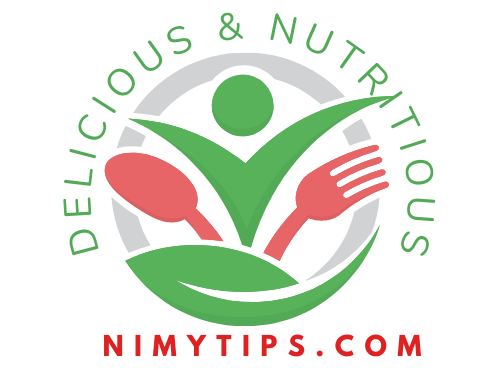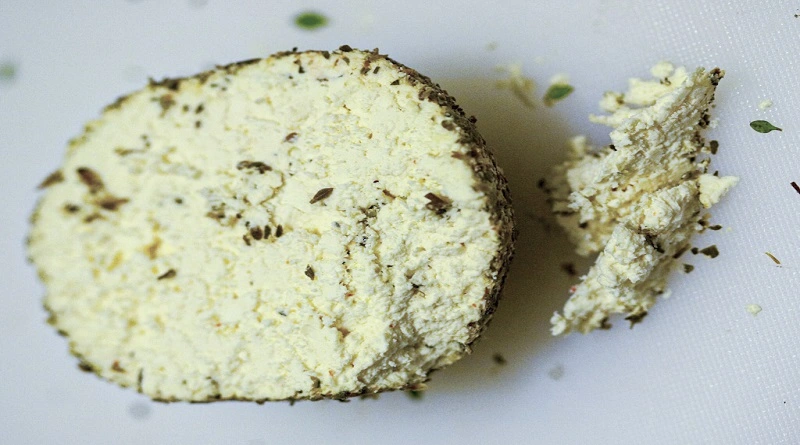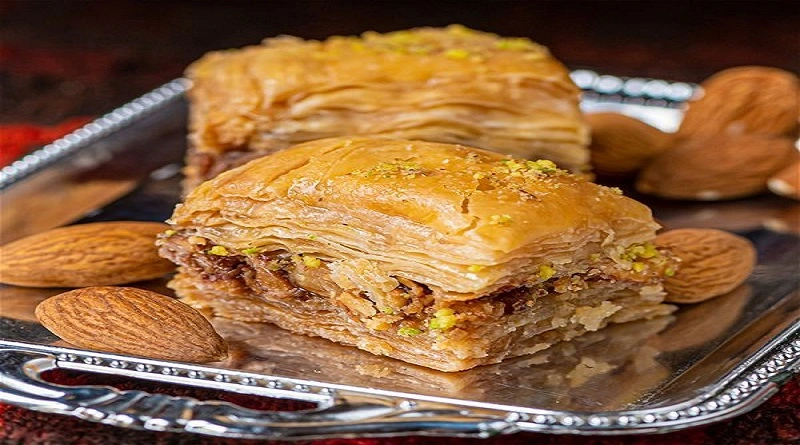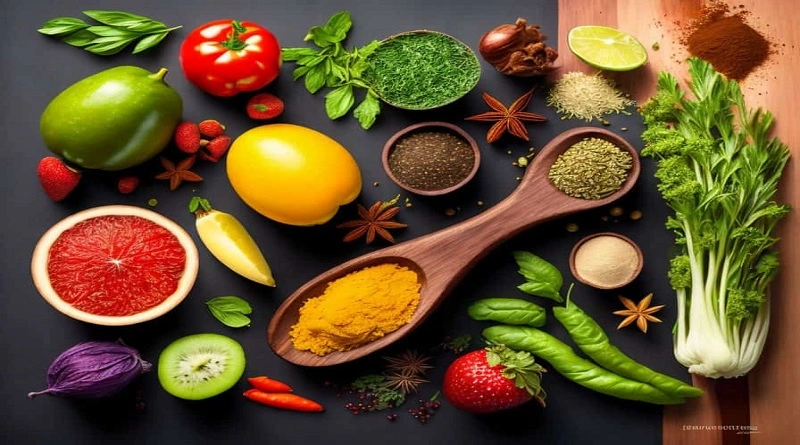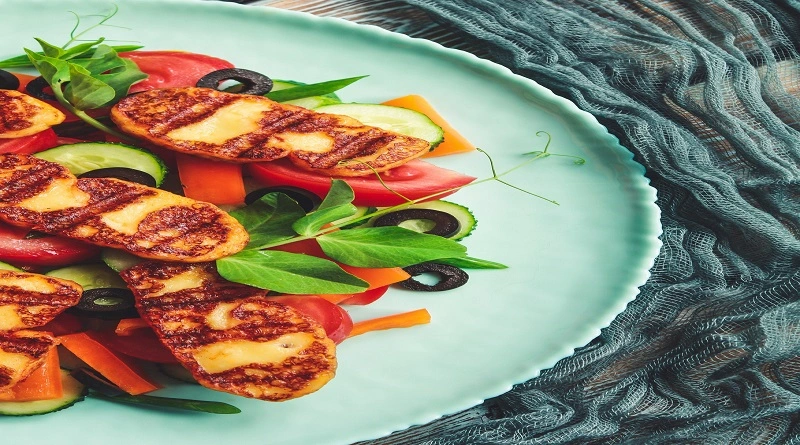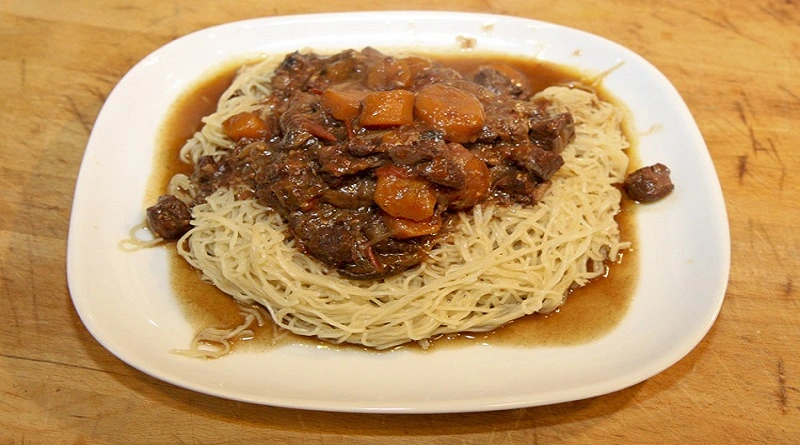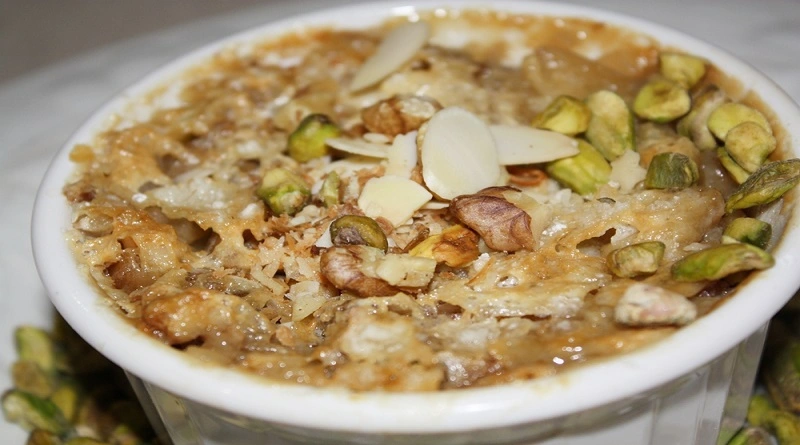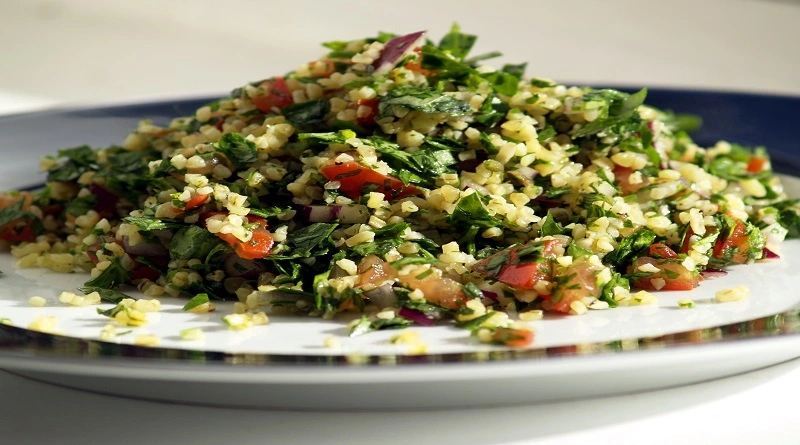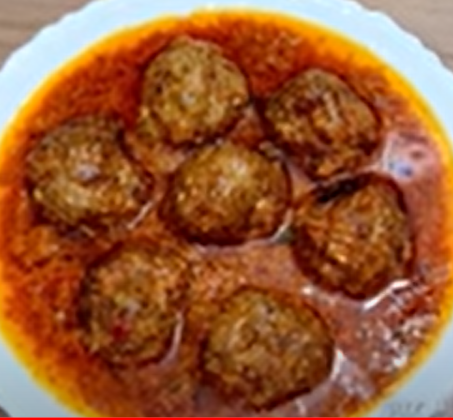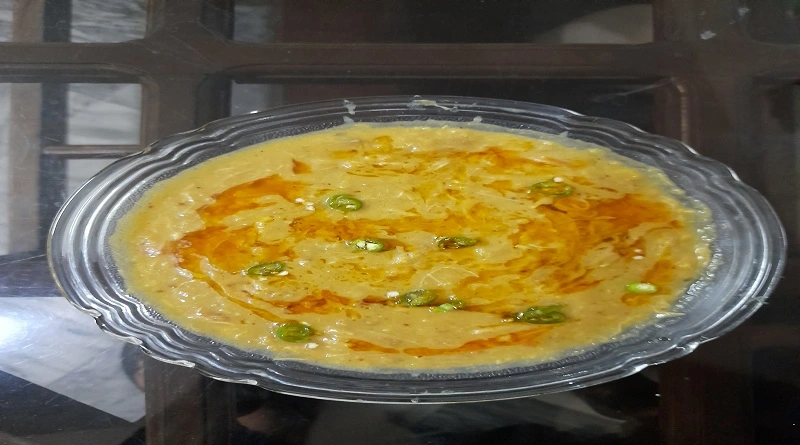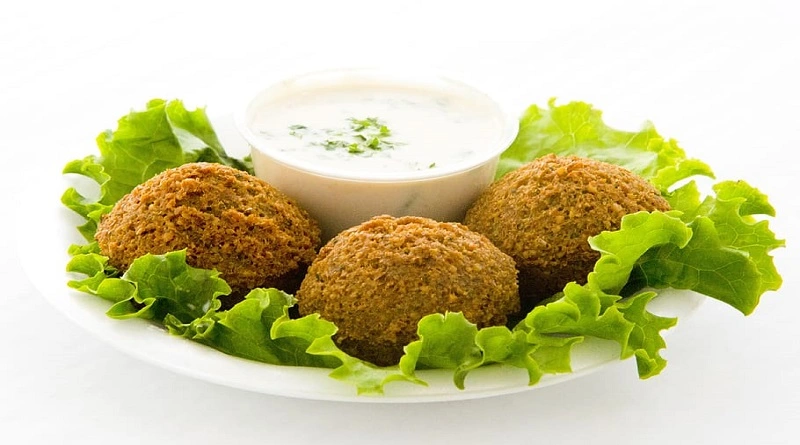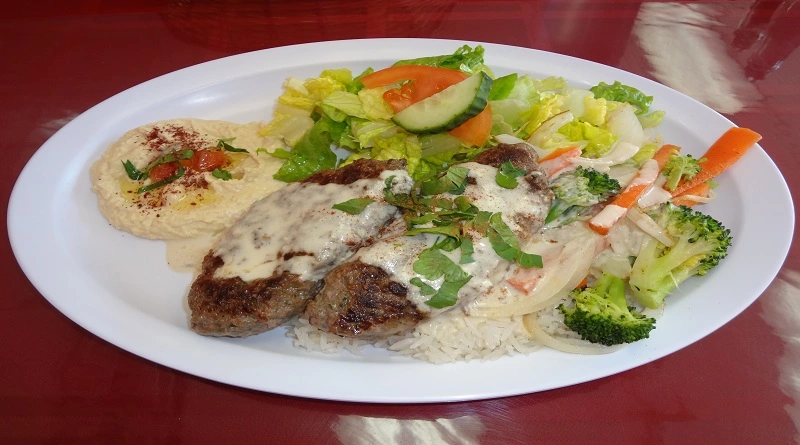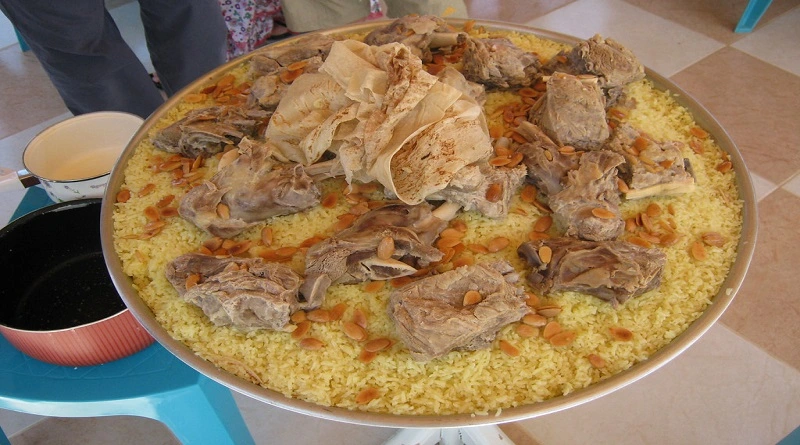Tabouleh is a Levantine salad dish that has a rich history and cultural significance in the Middle East. It is believed to have originated in the mountains of Lebanon, Syria, and Palestine, where it was traditionally served as a breakfast food.
This dish is among the most ever-liked dishes in the middle east like Baklava, Knafeh, Iraqi Masgou, Kebab Karz, Mansaf, Shanklish, Shawarma, Falafel, Moutabal, etc.
Introduction
The salad is made with fresh parsley, mint, tomatoes, onion, bulgur wheat, and lemon juice, all finely chopped and mixed together. It is often served as a side dish or as a main course with pita bread.
Tabouleh has become a cultural icon in the Middle East and is now enjoyed around the world. It is often served at weddings, feasts, and other special occasions, and has become a symbol of Levantine cuisine.
The dish has also gained popularity in Western countries, where it is appreciated for its fresh, healthy ingredients and unique flavor. As such, Tabouleh has become an important cultural figure, representing the rich history and traditions of the Middle East.
In addition to its delicious taste, tabouleh is also known for its numerous health benefits. In this article, we will explore the health benefits of tabouleh and provide a simple recipe for you to try at home.
Health Benefits of Tabouleh
Tabouleh is a nutritious and healthy salad that is low in calories and high in vitamins and minerals.
- Rich in Antioxidants
Tabouleh is loaded with antioxidants, which are essential for maintaining good health. The parsley and mint in tabouleh contain high levels of antioxidants that can help protect your cells from damage caused by free radicals.
- High in Fiber
Tabouleh is an excellent source of fiber, which can help keep your digestive system healthy. The bulgur wheat in tabouleh is particularly high in fiber, which can help regulate bowel movements and prevent constipation.
- Low in Calories
Tabouleh is a low-calorie dish, making it an excellent option for people who are watching their weight. One serving of (100 gm) tabouleh contains approximately 80 calories, depending on the ingredients used.
- Packed with Nutrients
Tabouleh is a nutrient-dense dish that contains a wide variety of vitamins and minerals. The parsley in tabouleh is an excellent source of vitamin K, vitamin C, and vitamin A, while the mint is high in vitamin C, vitamin A, and folate. Tomatoes are also a great source of vitamin C and potassium.
- Supports Heart Health
The ingredients in tabouleh, such as parsley, mint, and olive oil, are known to be beneficial for heart health. The monounsaturated fats in olive oil can help lower cholesterol levels, while the antioxidants in parsley and mint can help protect against heart disease.
Additionally, the salad is low in fat and sodium, making it a healthy option for those looking to maintain a balanced diet. Overall, Tabouleh is a nutritious and delicious salad that can be enjoyed as part of a healthy diet.
Recipe for Tabouleh
Here is a simple recipe for making tabouleh for two people serving at home:
Ingredients:
- 1 cup bulgur wheat
- 1 1/2 cups boiling water
- 1/4 cup fresh lemon juice
- 1/4 cup extra-virgin olive oil
- 1 tsp salt
- 1/2 tsp freshly ground black pepper
- 2 cups finely chopped fresh parsley leaves
- 1/2 cup finely chopped fresh mint leaves
- 2 medium tomatoes, seeded and finely chopped
- 1/2 cup finely chopped red onion
Utensils required in cocking taboulesh
To cook tabouleh, you will need several utensils. Here are some of the common utensils required for making tabouleh:
- Cutting board: You will need a cutting board to chop the herbs and vegetables.
- Chef’s knife: You will need a sharp chef’s knife to chop the herbs and vegetables.
- Mixing bowl: You will need a mixing bowl to combine the chopped herbs and vegetables with the other ingredients.
- Measuring cups and spoons: You may need measuring cups and spoons to measure the ingredients accurately.
- Fork or whisk: You will need a fork or whisk to mix the ingredients together.
- Lemon squeezer: You may need a lemon squeezer to extract the juice from the lemon.
- Serving bowl: You will need a serving bowl to transfer the tabouleh into for serving.
Instructions
- Place the bulgur wheat in a large bowl and cover with boiling water. Let stand for 30 minutes or until tender.
- In a small bowl, whisk together the lemon juice, olive oil, salt, and pepper.
- Fluff the bulgur wheat with a fork and add the parsley, mint, tomatoes, and red onion.
- Pour the dressing over the salad and toss to combine.
- Serve chilled or at room temperature.
Precautions in cooking
When cooking tabouleh, there are a few precautions you should keep in mind to ensure that it is safe to eat and enjoyable to taste:
- Use fresh ingredients: When making tabouleh, it is important to use fresh ingredients, such as herbs, vegetables, and lemon juice. This not only ensures that the dish tastes its best, but also helps prevent the growth of harmful bacteria.
- Rinse ingredients thoroughly: Before chopping your vegetables and herbs, be sure to rinse them thoroughly under running water to remove any dirt, bacteria, or pesticides that may be present.
- Use a clean cutting board: When chopping your ingredients, use a clean cutting board to prevent cross-contamination with other foods.
- Store tabouleh properly: After making tabouleh, store it in an airtight container in the refrigerator to prevent the growth of bacteria. Be sure to stir it well before serving to redistribute the dressing and ensure that it is evenly coated.
- Serve at the right temperature: Tabouleh is best served cold or at room temperature. If you are serving it outdoors or in warm weather, be sure to keep it chilled to prevent spoilage.
By following these simple precautions, you can ensure that your tabouleh is safe and delicious every time you make it
Side Effects of tabouleh
There are generally no serious side effects of eating this dish, as it is a healthy and nutritious dish made from fresh vegetables, herbs, and grains. However, some people may experience mild digestive discomfort if they are not used to eating fiber-rich foods or if they have a sensitivity to certain ingredients in the dish.
Some possible side effects of eating tabouleh may include:
- Bloating or gas: Because this dish contains high amounts of fiber from vegetables and grains, some people may experience bloating or gas after eating it.
- Allergic reactions: If you are allergic to any of the ingredients in tabouleh, such as parsley or bulgur wheat, you may experience symptoms such as itching, swelling, or difficulty breathing.
- Cross-contamination: If this dish is made in a kitchen that also prepares foods containing allergens, such as nuts or dairy, there is a risk of cross-contamination, which could cause an allergic reaction in sensitive individuals.
- Food poisoning: If this dish is not prepared and stored properly, it could become contaminated with harmful bacteria, such as E. coli or Salmonella, which could cause symptoms such as nausea, vomiting, or diarrhea.
To minimize the risk of experiencing any side effects from eating this dish, it is important to prepare and store the dish properly, use fresh ingredients, and avoid any allergens or ingredients that may cause digestive discomfort. If you have any concerns about eating tabouleh or experience any symptoms after consuming it, consult with a healthcare professional.
Conclusion
Tabouleh is a delicious and healthy dish that is easy to prepare at home. This Levantine salad is packed with antioxidants, fiber, and nutrients that can help support good health. If you’re looking for a nutritious and flavorful addition to your meal plan, give this dish a try.
FAQs
Is tabouleh gluten-free?
Most it recipes contain bulgur wheat, which is not gluten-free. However, you can substitute quinoa or rice for the bulgur to make a gluten-free version.
Can I make tabouleh ahead of time?
Yes, it can be made ahead of time and stored in the refrigerator for up to 3 days. Just be sure to stir it well before serving, as the dressing may have settled to the bottom.
Can I add other vegetables to tabouleh?
Yes, you can add other vegetables to this dish, such as cucumbers, bell peppers, or radishes. Just be sure to chop them finely so that they blend well with the other ingredients.
How can I make tabouleh spicier?
If you like your food spicy, you can add some diced jalapeno or red pepper flakes to the tabouleh. Just be sure to start with a small amount and adjust to your taste.
Is tabouleh a good option for vegetarians?
Yes, it is a great option for vegetarians and vegans, as it is a plant-based dish that is packed with nutrients and flavor. It can also be served as a side dish or a main course.
References
- “The Arabian Nights Cookbook: From Lamb Kebabs to Baba Ghanouj, Delicious Homestyle Arabian Cooking” by Habeeb Salloum.
- “Arabian Delights: Recipes & Princely Entertaining Ideas from the Arabian Peninsula” by Amy Riolo.
- “The Complete Middle Eastern Cookbook” by Tess Mallos.
- “Classic Lebanese Cuisine: 170 Fresh and Healthy Mediterranean Favorites” by Kamal Al-Faqih.
- “The Food of Oman: Recipes and Stories from the Gateway to Arabia” by Felicia Campbell.
- “The Lebanese Kitchen: Quick and Healthy Recipes” by Monique Bassila Zaarour.
- “Persiana: Recipes from the Middle East & Beyond” by Sabrina Ghayour.
- “The Jewelled Kitchen: A Stunning Collection of Lebanese, Moroccan and Persian Recipes” by Bethany Kehdy.
- “Saha: A Chef’s Journey Through Lebanon and Syria” by Greg Malouf.
- “The New Middle Eastern Vegetarian: Modern Recipes from Veggiestan” by Sally Butcher.
- https://en.wikipedia.org/wiki/Tabbouleh
